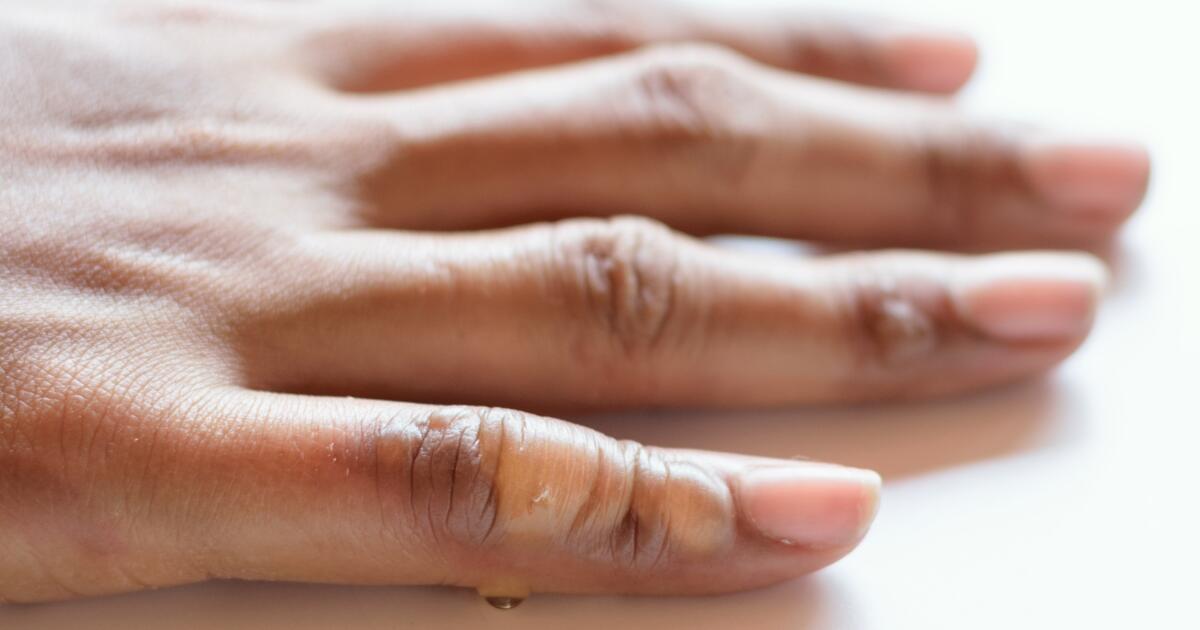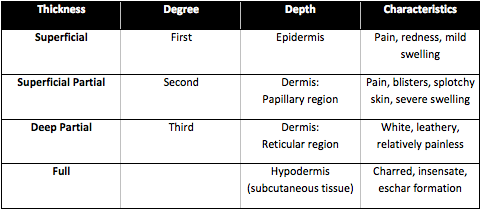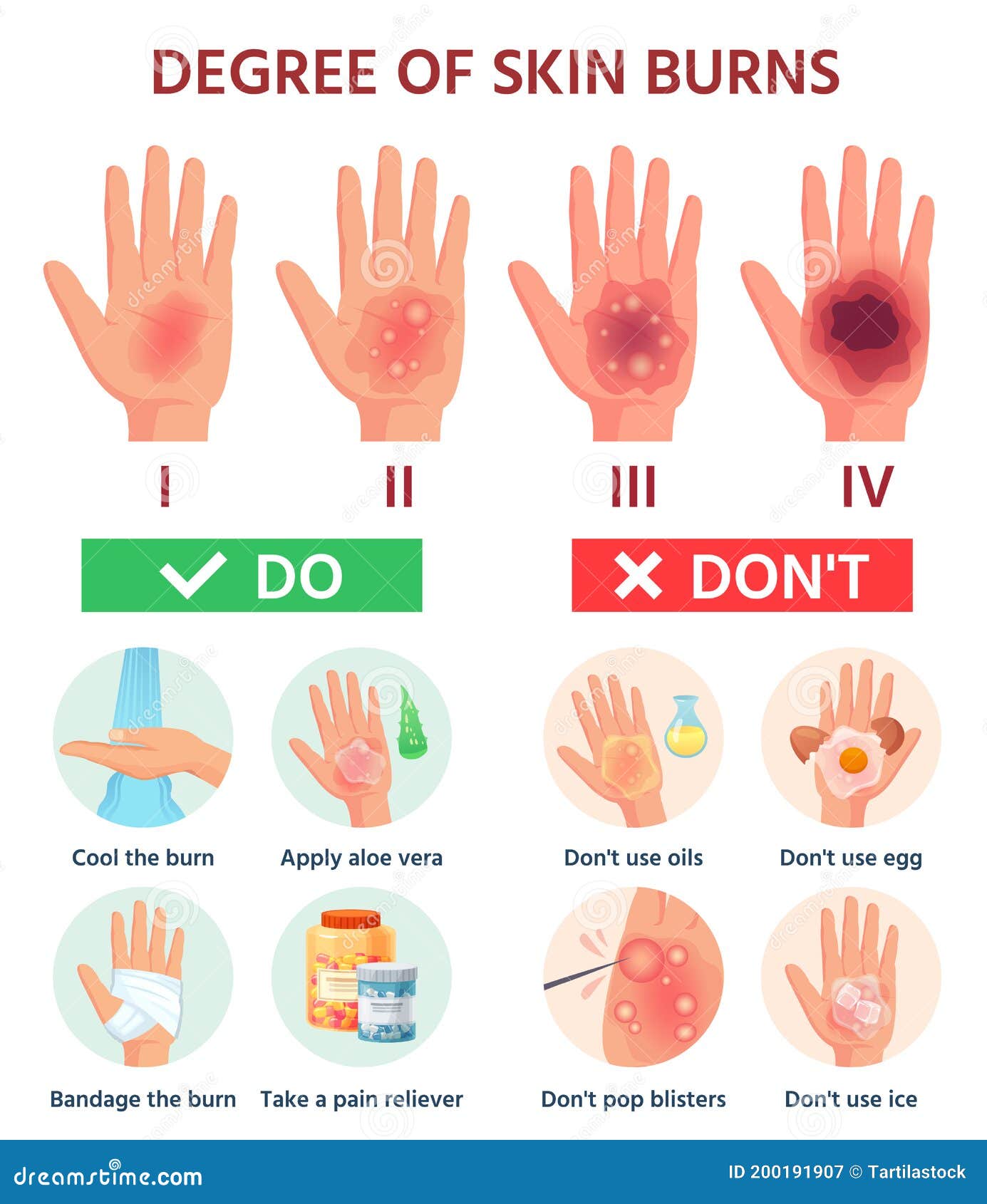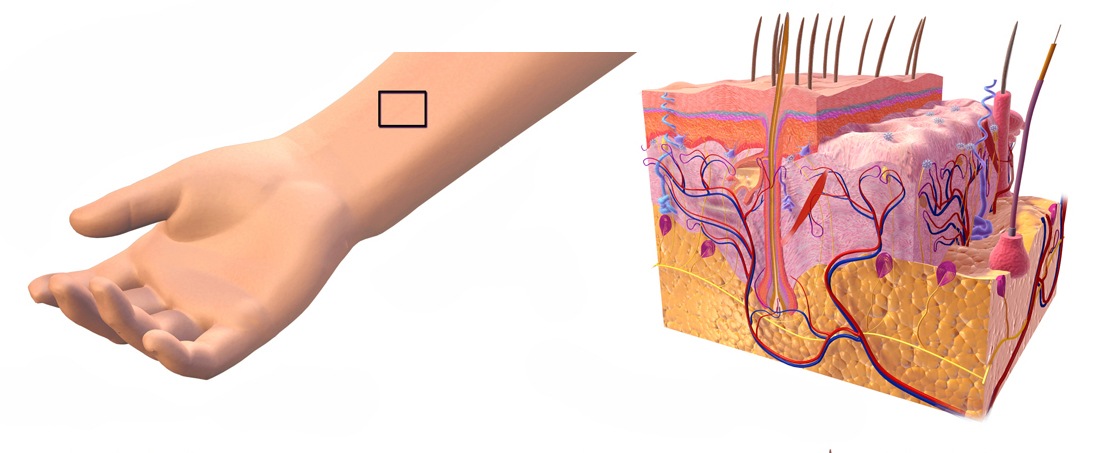Explain the Different Degrees of Burns
A second-degree burn involves the second layer of the skin called the dermis Chaffin explains. Doctors evaluate burns by degree.

Types Of Burns By Degree First 2nd 3rd Degree Burns
Healing typically does not occur on its own.

. First-degree burns dont blister and only involve the top layer of the skin. The burned skin looks white or charred. Only the top layer of skin is damaged.
They affect both the outer and middle layer of skin. First-degree superficial burns First-degree burns affect only the epidermis or outer layer of skin. Burns from hot liquids steam and fire are the most common causes of burns.
Partial thickness burns These burns involve the top layer of skin and a portion of the second layer of skin. Blisters and some thickening of the skin. First-degree burns are mild like most sunburns.
A fourth-degree burn additionally involves injury to deeper tissues such as muscle tendons or bone. The damage is restricted only to the outer or topmost layer epidermis of the skin. The three types of burns are.
In a third-degree burn the damage completely destroys the thick layer of skin and reaches the fatty tissue underneath. Second-degree burns take three weeks or more to heal without scarring but usually cause pigment changes in the skin. First-degree burns superficial burns.
This is a superficial burn that will turn your skin red but will not create blisters. In a full-thickness or third-degree burn the injury extends to all layers of the skin. Burn Classification First Degree Burn.
Second- and third-degree burns are considered serious and require medical attention. First degree burns are just on the surface of your skin and dont usually cause any long term damage like sunburns or touching a hot pan etc. There are three types of burns.
Healthcare providers classify burns by degrees of severity. Mild sunburn is an example. The burn site is red painful dry and with no blisters.
Different degrees of burns First degree burn Typical superficial sunburns without blisters Second degree burn Scalding usually due to hot water Third degree burn Burns involving all skin layers Fourth degree burn Full thickness burns Extent of damage to the tissues symptoms cure First degree burn Involves only the epidermis. Learn how to treat burns at home and when to call 911. Widespread thickness with a white leathery appearance.
Depending on how much the burn has penetrated the skin the burn can be categorized into four types. Third-degree burns cause damage to all layers of the skin. First degree burns affect only the.
Third-degree burns go through both the first and second layers of skin into the third and lowest layer of the skin. First-degree burns affect only the outer layer of the skin 2nd-degree burns affect the layer beneath the epidermis and 3rd-degree burns reach the fat layer under the skin. Second-degree burns also called partial-thickness burns affect the outermost layer of skin and extend to the middle skin layer below.
Here are the four degrees of burns and how they may be treated. These 3 classifications are referred to as 1st 2nd and 3rd degree burns. Your provider will evaluate the extent of skin damage.
Often there is no pain and the burnt area is stiff. Hot metals scalding liquids steam and flames when coming in contact with the skin can cause thermal burns. There are many types of burns caused by thermal radiation chemical or electrical contact.
First-degree burns damage only the outer layer of skin Second-degree burns damage the outer layer and the layer underneath Third-degree burns damage or destroy the deepest layer of skin and tissues underneath Burns can cause swelling blistering scarring and in serious cases shock and even death. Burns are classified as first- second- or third-degree depending on how deep and severely they penetrate the skins surface. Second-degree burns affect skins top and lower layers dermis.
First degree burns are of lowest impact whereas 3 rd are of highest impact and affected. Once a burn starts to blister its classified as a second-degree burn. It will heal in about.
A first degree burn is the least severe of the types of burns. In first degree burns the top layer of the skin gets damaged but it is not destroyed. The top layer of skin epidermis turns red and is painful but doesnt typically blister.
Second degree burns last longer and covers everything between first and third degree burns. Second-degree burns have blisters and are painful. 1st 2nd and 3rd Degree Burns are based on the classification of burns on the basis of their severity.
A second degree burn is classified as a burn that affects both the epidermis and the dermis. The color of the skin changes to bright pink or very red. This type of burn results in partial thickness.
The type of degree that a burn is assigned has a direct correlation to the severity of the burn. To determine the level of severity for each burn burns are broken down into 3 basic classifications. First degree or superficial burns A superficial burn is usually red and turns white if you press on it.
Burns are categorized as first second or third-degree burns depending on how deep into the skin they go and how much of the bodys skin has been burned. First-degree burns are not serious and can be treated at home. First-degree burns are the least severe.
They are red and painful swell slightly and turn white when pressed. Burns due to external heat sources which raise the temperature of the skin and tissues and cause tissue cell death or charring. Do not apply cold water or ice to second-degree burns which can cause damage to the tissue around the burn.

How To Perform First Aid On 1st 2nd And 3rd Degree Burns Sunburn Remedies Sunburn Treatment Home Remedies For Sunburn

Symptoms Of Thermal Burns Burn Injury Severe Burns 2nd Degree Burns

Superficial Partial Thickness Second Degree Burns Woundsource

Degrees Of Burns Burns Nursing Burn Unit Nursing Nursing School Survival

Burns Degree First Aid For Burn Wound Fire Damage To Skin Classification Hand Blisters Vector Infographic Treatment Stock Vector Illustration Of Degree Dermis 200191907

First Aid For Burn Injuries Global

Burn Injury Stages Classification Treatment De Caro Kaplen Llp

Skin Burn Three Degrees Of Burns Type Of Injury To Skin Skin Burns Burns Degree Burns

Burn Classifications Superficial Partial Thickness Deep Partial Thickness Full Thickness Refe Medical Surgical Nursing Nursing Mnemonics Nursing Study

Pin By Robin Hughes On School Project On Skin Diseases And Disorders Layers Of Skin Skin Diseases Epidermis

Ny Burn Injury Lawyer Explains How Burn Injuries Can Come In Many Forms Frekhtman Associates Burns Nursing Wound Care Burn Injury

Degree Burns Of Skin Infographic Stock Vector Illustration Of Isolated Accident 118677869
Second Degree Burns Treatment Healing Stages Video Lesson Transcript Study Com

Medical Vector Illustration Burn Stages Degree Burns Of Skin Royalty Free Cliparts Vectors And Stock Illustration Image 153097824

What To Do When Your Child Gets Sunburned Burns Nursing Degree Burns Nursing School Studying
.1).png)
First Second And Third Degree Burns

Degree Burns Stock Illustrations 91 Degree Burns Stock Illustrations Vectors Clipart Dreamstime


Comments
Post a Comment